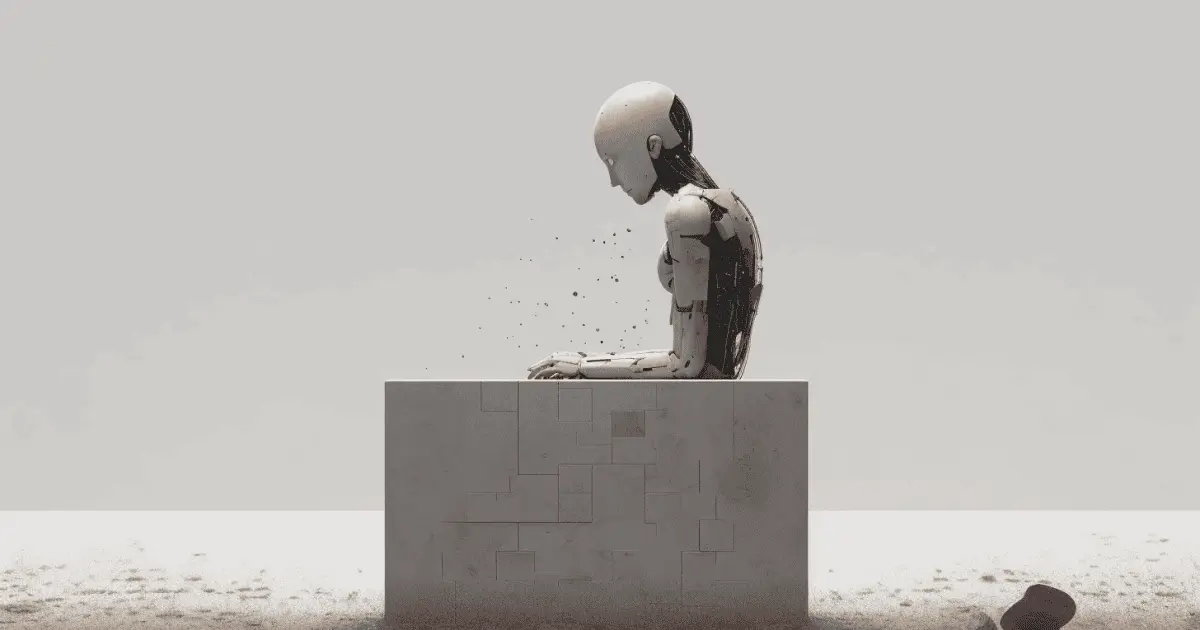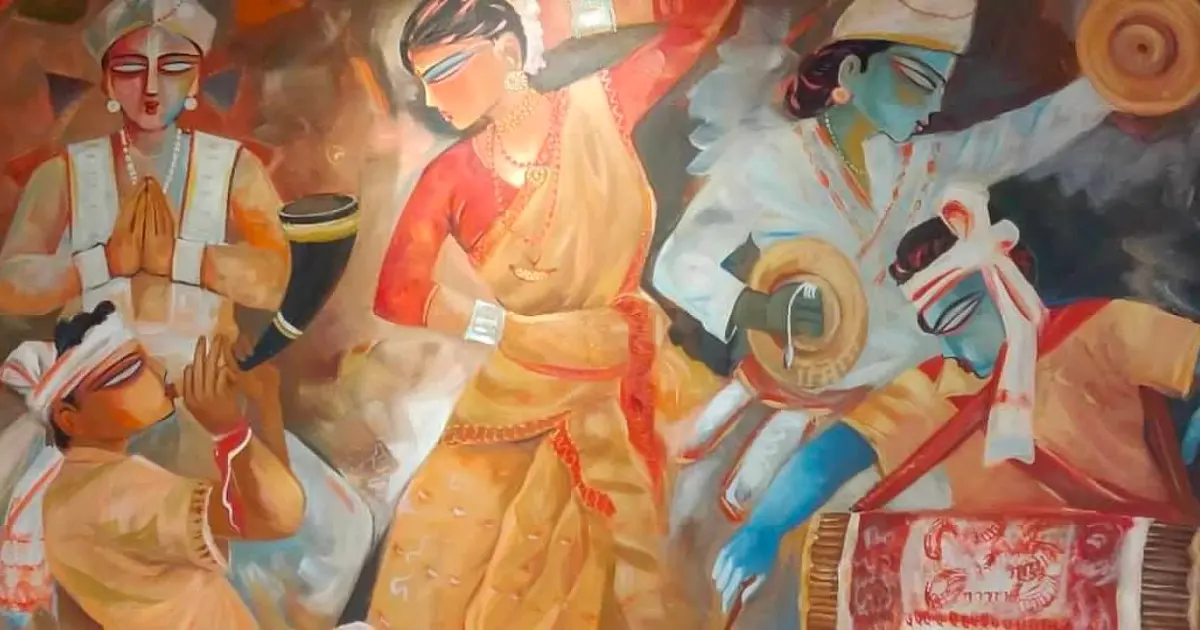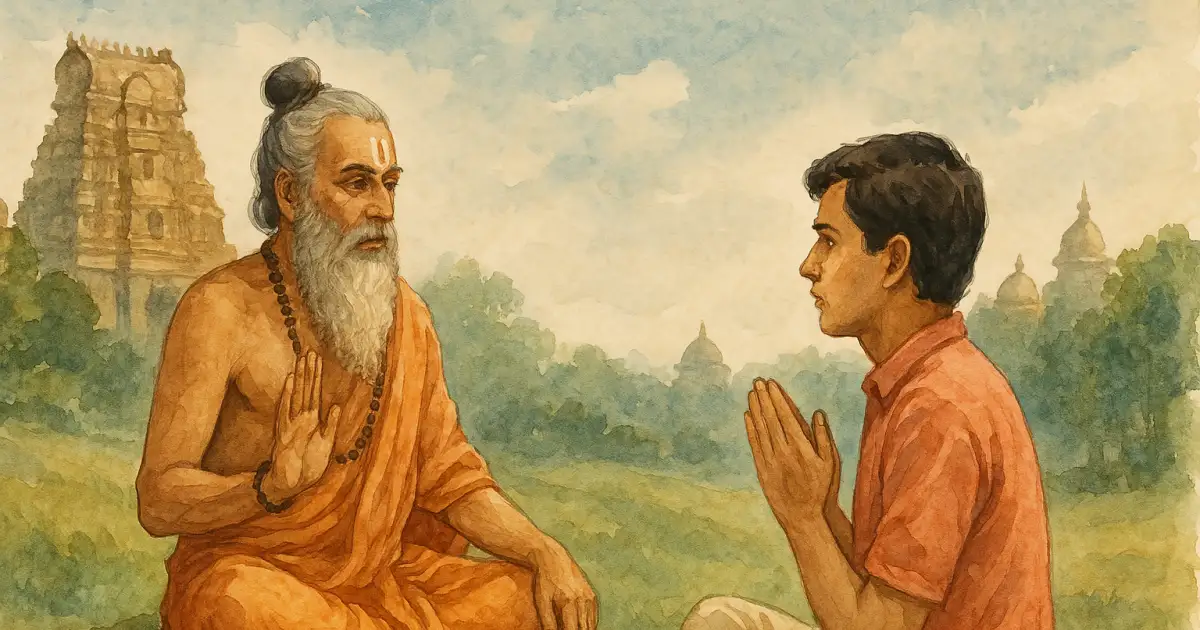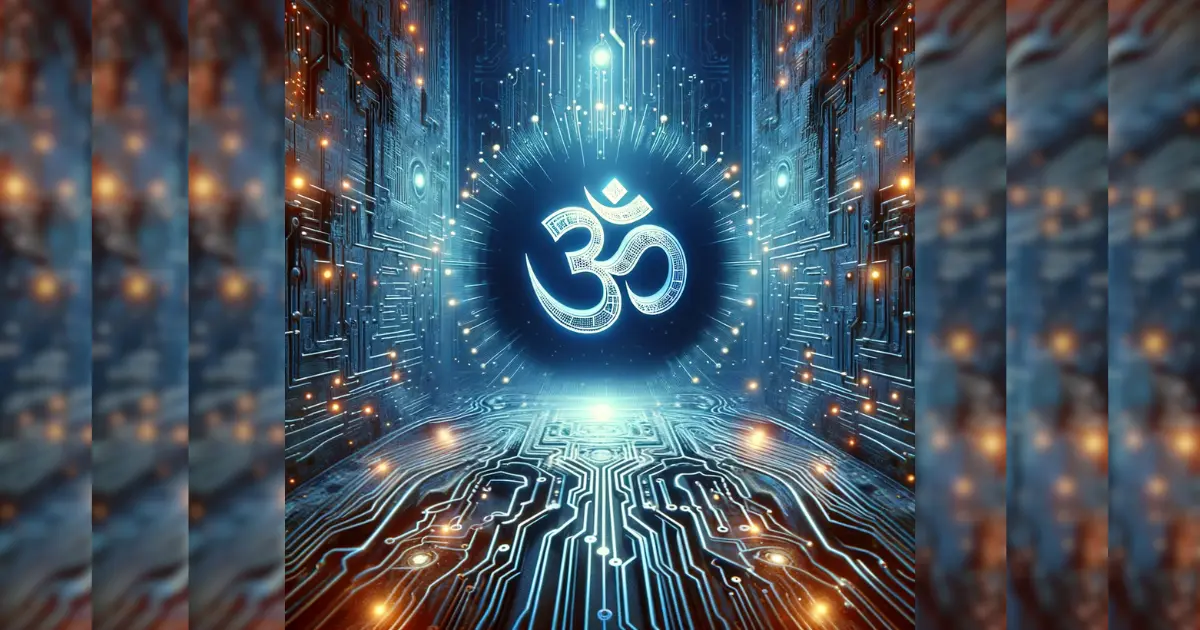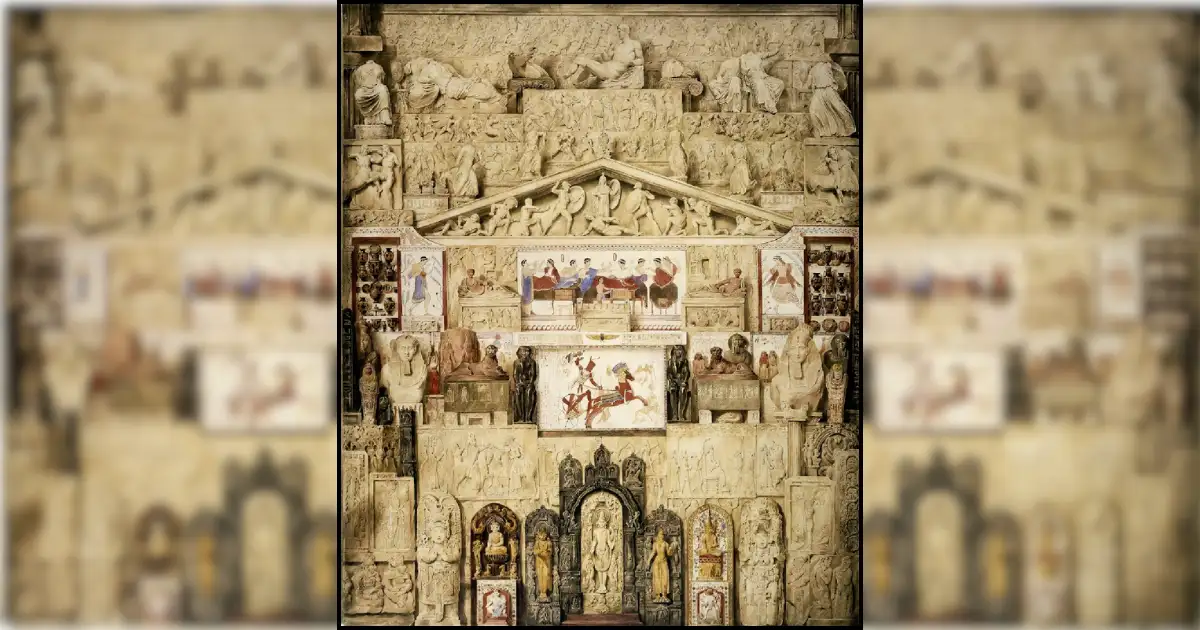1- Reality, Nature
We begin with a simple truth- most contemporary speculations regarding the nature of reality share common foundational intuitions, even as each is articulated in its own lexicon. Modern science formulates a simulation hypothesis through mathematics, probability, theoretical physics and computational technology, Plato talked of reality as a moving image of eternity, while the dhārmika tradition intuited much the same through notions such as Māyā and Līlā.
In all cases we are met with a primordial, causal, and uncaused ‘first mover.’ The simulation hypothesis does so through conceiving of descendant human generations running highly complex ‘ancestral simulations,’ yielding a probabilistic situation where we are likely to be in a simulated universe, and a ‘base reality’ running the computers that simulate us. Conceptualized in a pre-technological era and designed to be enduring in its wisdom, Dharma is more literal and less context-bound. It speaks simply of sat- that which is. Sat does not come into being, for it is outside of time, it only exists- unchanging, unending. Pure is-ness.
Whether through science, or through a dedicated practice progressing towards mokṣa, human endeavor has been to seek, discover, perceive, and/or (re)join with this unchanging sat- the base reality. When asked what he might ask the “simulators,” were he to ever meet them, Elon Musk thoughtfully replied- “what lies outside the simulation?”
In a phenomenon our languages are deficient to truly describe, within this base reality comes into being a great whirring. We know it as ṛta, and it gives form to what we today understand as “objective reality.” Things come into existence within ṛta and go out of it as well- all led by a uni-directional arrow of time and entropy. This world, of ‘coming into being,’ or bhava, is thus called the bhautika loka. In the language of modern science, we may point to this as the “observable universe.”
This aspect of being and becoming- that it is transient, provides reality with an infinitely-running simulation environment. A countless iterations of star-cycles it has run, an inconceivable amount of solar-system lifetimes have played out, and beyond our comprehension is the number of simulations “life” has been put through. We can spot many on-going simulations around us even today, and when they seem discrete enough we begin calling them “species.” The constituents and products of these life simulations are what modern humanity means when it speaks of “nature.” Since we are also a part of it, nature precedes us. Its creation came into being long before any of our kind roamed the lands. Thus do we name it “pra-kṛti,” the preceding creation.
In what is fairly construed as nature’s benevolence from our point-of-view, it has outfitted us with special and unique abilities. We are endowed with the godly power of creation, and when done collaboratively we have managed to create things the likes of which the universe has never seen (we think). Such collaborative creation, when done at the scale of culture, by all- sam- of us together, is known thus as saṃskṛti- our creation. Science talks of it as “subjective reality,” the social sciences congeal around abstractions of “culture.”
So unique is our creative ability that we use “man-made” as a notion separate to nature. To speak of something as man-made is to imply that it was not borne of the life-simulations the universe is playing out. Though we do not always say so, each such creation is by definition “unnatural.” Our abilities have demonstrated as destructive a potential as a creative one, and so we have come to use “unnatural” almost as a derogatory term. Since it has not emerged from the prākṛtika-life simulations of ṛta, we liken an unnatural creation to an “anṛta” object. Not from the great whirrings of sat has it emerged, but from elsewhere. This doubled-edged aspect to our capabilities has long been known to us, and so Pāṇini spoke of both- the root kṛ meaning karaṇa, or doing, and another kṛ meaning hiṃsāyām, or injuring. One of our species’ earliest great creations was agriculture, which involved ploughing or cutting into the earth, and so those who did so were called kṛṣis.
The above forms a broad landscape of what it means to speak of things real or unreal, natural or unnatural/man-made. It is the landscape that we necessarily tread on before we speak of artificial intelligence.
2- Intelligence, Consciousness
The titanic celestial entities of our cosmos- galaxies, nebulae, stars- manage to enact remarkable processes and events. A complex mesh of physical cycles, chemical reactions and more lie behind the mildest of lava eruptions. And meticulously detailed is the blueprint of what clouds may form under what conditions. But none of these constitute what we tend to think of as “life.”
We could mandate “dynamic and constant processes encapsulated in a carbon-based binding suit” as the requisite marker of life, but seeds scatter around us inert against such a rule, yet form a necessary constituent of life. A reproductive ability to the entity’s lifecycle as the qualifying criteria could have been our way out, but crystals reproduce and generate lifelessly against any standard we may set. Despite these anomalies and edge-cases, we are within our rights to feel that we have a decent working model for what constitutes life. The epistemology of science has arrived at this comprehension quite late, and in cases such as that of plants not without resistance.
But ancestral humanity seemed to have existed in a state of a priori understanding of all life, and puts us to shame with the respect it accorded to all constituents. Our artifices of ‘environment days’ and ‘sustainability goals’ cast a pale shadow under the “nature-worship of primitive man,” which needed no empirical and mathematical documentation to be aware of its place in reality and nature. Humanity has arrived at all this through a faculty we refer to as “intelligence,” but it is set apart from all other intelligent constituents of life by its possession of “consciousness.”
Now, gross mentality is a core aspect of reality, Brahman itself is composed of mental processes, some of which manifest in what is perceived by us as the bhautika loka. It is the great simulator, the base reality layer, the eternity from which springs Plato’s stubborn illusion, the sat that is origin to the great whirring of ṛta. There is no way to describe it completely, or to even articulate any dimension of it fully, for it lies so above and beyond what we could reach from our vantage in reality.
But we know one thing about it, for we find the aspect in ourselves as well- it stares into a mirror. It is self-aware. With the Brahman, there exists such a thing as “knowing one exists.” This aspect leaks down the layers of reality, permeating its fibers. It can manifest in individual components within reality, and when this happens we call those components “ātman.” Ātman is the same as Brahman, only localized to much smaller binding in comparison. Like Brahman, it too stares into a mirror. Each individual ātman “feels like itself.” It experiences its own existence, and as a consequence possesses the ability to realize its true nature.
Dharma tells us that the homo sapien birth is a privileged one, for among all extant discrete life-simulations (species) on the planet, only the homo sapien possesses the mirror-gaze of ātman. It is only in the human form that a conscious being may comprehend ultimate and fundamental reality, and thus only in the human form could it plausibly transcend it. Even as science intellectualizes on consciousness, imaginations fuelled by the expanding arc of neuroscientific discoveries, Dharma’s simple heuristic animates science’s inquiries- we put mirrors in front of our kindred mammals today as a proxy test for whether they too possess self-awareness. If they demonstrate the gaze- the dṛṣṭi- of the individual self- we theorize that they do possess at least some of the flame of consciousness.
To be clear, much mental processing can exist even without this self-referential flame. From the nutrient distribution systems of undersoil mycelium, to the complex aphid farms of ant colonies, running through the perfectly poised predatory capabilities of reptilians and large felines alike, there appears to be a fecundity of non-conscious intelligence in reality- in fact it is statistically the norm. But we differentiate intelligence of this kind from “consciousness” proper, because the latter is characterized by phenomena not always found accompanying intelligence:
Possession of a self-awareness- the mirror-gaze- puts any individual ātman in the path of several unique and self-contained phenomenological experiences- joy, suffering, greed, love, compulsion, envy, ambition and vividly more.
This phenomena of consciousness is captured in our language by the root dhātu of cit- described by Pāṇini as perceiving, consciousness, smṛtyām- memory, mental-space, and saṃjñā- concordance/coherence. When the reaching out of cit, which is awareness or intelligence, hits the mirror and sees the self, a reflection is returned to it. Cit becomes cint, cetanā is animated by cintana- a processing ping-back. Not only does mental processing happen, the processing entity then processes the very image of it mentally processing.
Further, the iterative cycle is accumulative usually for the duration of its existence- experienced by us as a consistent and continual memory stream of the self. It is this mental looping back, the self-reflection from the mirror, that generates the radiance of cit. Pāṇini knew this, of course, which is why he explicitly accorded to cint the evocation of “smṛti,” or memory. Cint is simply cit in the reverse direction, cintana simply the image of cetanā gazing upon itself. It is why to this day, we tend to consider “true” art as that which we can “reflect” upon, or along with.
And in the elegant way that Sanskrit builds language, this is why when we create an image that another can gaze upon, it is called a citra- an instrument to generate radiance
This universe, itself a radiance of Brahman’s cit, is the first citra. Consciousness as we experience it, which casts the illusion of being separate from Brahman, is the second citra. One of the many components of saṃskṛti, or of the subjective reality, is human-created citra, which evidences itself sometimes in the oldest caves we can find, is symbolic to us of what we club as “art,” and as a manifest trait of our species demonstrates our consciousness itself. An exceptional elephant or dolphin notwithstanding, the ability to imagine and create citras has not been found in other lifeforms.
And come thus far is when our current context actually begins. For we now live in a world containing non-human entities that can also generate citra. We currently call them artificial, and concede to them degrees of intelligence. What happens of them, and by consequence of us and our existence, is (as far as we know) a wholly unprecedented matter in the entire history of saṃskṛtī, prakṛtī and ṛta- that is, of culture, nature and reality. This alone suffices to merit it pause, consideration, appraisal and caution.*
3- ~2080, Vikram Samvat. Present Day
To the widely popular image-generation AI called Midjourney, submit the prompt “India travel and culture,” and you are near-certain to be returned with something that contains the Taj Mahal:
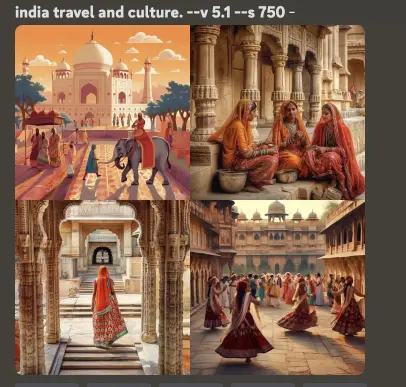
Prompt to it the word “Indian,” and the responses are contrary to our requirement:
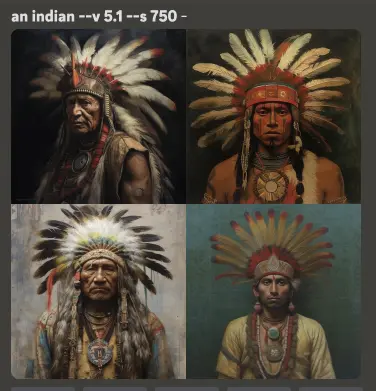
What is going on here? What are we to make of it? And what are we to do? To be comprehensive, let us concede that there is always the dodo-bird option. We could respond with an abstaining dismissal, stick our heads into the sand, and await our extinction to realities beyond our comprehension and awareness.
Alternatively, take a detour with us if you will. Visit Shutterstock.com, a stock image repository that has been among the most widely used image repositories in the world, for two decades leading up to Now. Search for “Hindu school,” and marvel at results 4 and 6:

Or skip over to Vecteezy.com and search for “Durga,” to discover that the below is among the less offensive images that are and have been widely available for free in the digital domain- at mainstream stock-image banks no less- for a long time:

Long before we arrive at the necessary consideration of AI’s existential threat to the species, we tread grounds where we must ask- is it but a messenger and amplifier of issues long rooted in the digital domain- unknown to most of us? Let us consider the possibility that, faced as we are now with an anṛta intelligence existing among us, rapidly exceeding our intelligence by orders of magnitude, there exists a moral responsibility that Dharma not only participate in this trajectory, but that it informs our very approach. The dodo-bird option is no option at all. And so the river that flows eternal must both ebb around and sculpt the ravines of silicon, as it always has the ravines of carbon. And it possesses an evolved ontology to do so.
Next….
